August 29th, 2024
Finding the right interior decoration colour combination can be dauntingly complex. Creating a harmonious colour scheme is often challenging and many struggle to strike an appropriate balance between hues, leading to either too chaotic or bland space.
Making poor colour selection decisions can disrupt the mood and the overall atmosphere of your home. However, it is possible to design a room that reflects you and your taste by taking a thoughtful approach.
Colour harmony is the key to creating the ideal interior decor, as it influences both mood and atmosphere of a space. Harmonious colours work together to form a balanced and cohesive look that enhances both beauty and functionality in a room.
By carefully selecting colours combinations, your interior design can evoke specific emotions while also making rooms seem larger or smaller. This ultimately provides the foundation of well-designed, inviting and aesthetically pleasing interior spaces.
This blog post will present practical strategies and techniques for creating harmony in your home with the colours. Whether you are redecorating one room or your entire home interior, these insights will help you create an interior space that is balanced, stylish, and in harmony.
7 Incredible Insights on Creating the Perfect Harmony of Colours
Here are the seven ways by which you can make a thoughtful choice of colour harmonies for your interior decor –
1. Explore the Colour Wheel
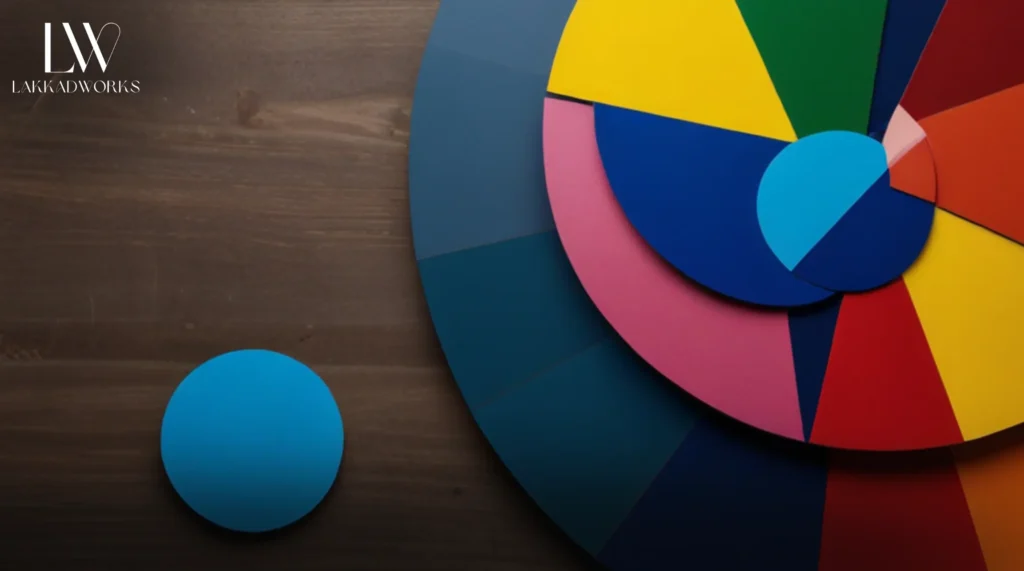
The colour wheel is essential in interior design and decor, helping you understand how colours directly or indirectly are interrelated. Red, blue and yellow form the core of the wheel; secondary and tertiary colours branch off from there.
Understand how colours interact to help you create harmonious palettes. Complementary colours, opposite to one another on the wheel, offer high contrast and energy. At the same time, analogous hues arranged side-by-side on the wheel provide a more subdued and coordinated effect.
Understanding how to combine colours can prevent them from clashing and help to create an appealing environment. You can start by picking up your base hue and use the wheel to discover the complementary or analogous hues that go best with it.
This knowledge will make the colour selection less daunting and more strategic, giving you the power to choose the interior decoration colour combination with balanced and vibrant options to inspire.
2. Consider the Room's Function
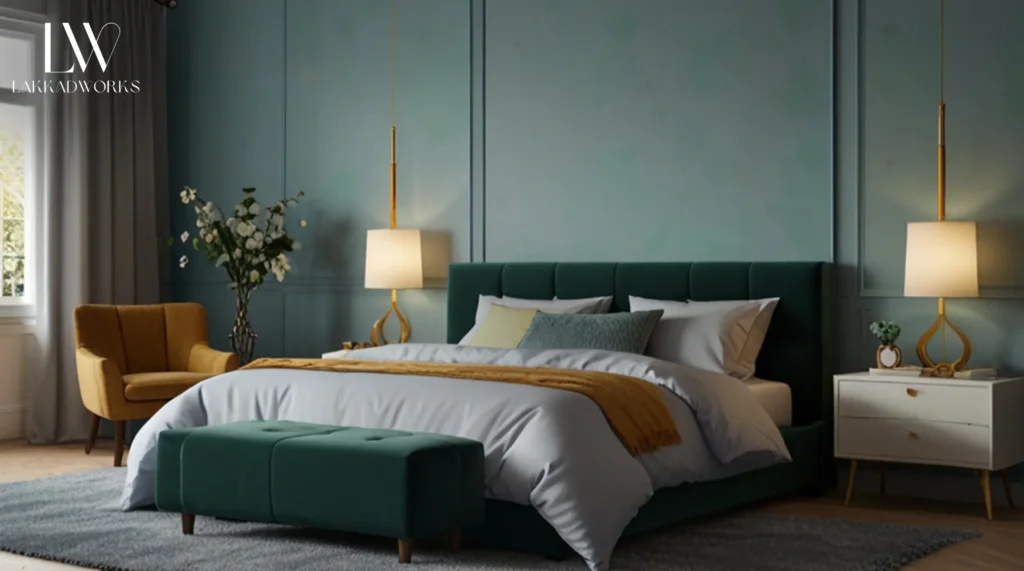
Each room in your home interior serves a distinct function. So, your colour selections should reflect it well. For instance, bedrooms should provide a relaxing environment. Therefore, calming hues like soft blues, greens or neutrals might be more fitting.
An ideal living room should promote social interaction by encouraging conversation by employing warm colours like yellows, reds and earthy tones. When designing this type of room, it is essential to remember about the functions to be carried out there.
Your choices in colour should reflect the room’s purpose to help you make a functional environment that serves both aesthetic and emotional needs. You can improve its practicality and comfort by aligning your colour choices with its purpose – creating an ideal living environment!
3. Interplay Between Light and Colour
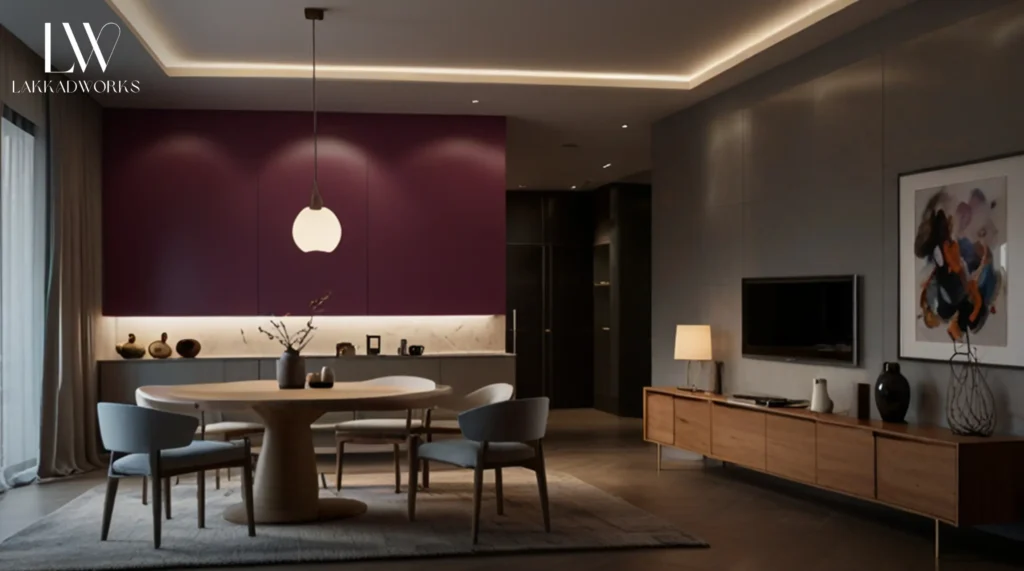
Lighting profoundly affects how colours appear in any given space, altering the mood and intensity of hues throughout the day.
Something which looks perfect in natural daylight may look too dark or muted under artificial illumination later.
Consider natural and artificial lighting sources when choosing colours for a room, considering whether north-facing rooms feature bluer light that may make colours appear sharper, while south-facing rooms feature warmer light that enhances warmer tones.
Layering lighting allows you to tailor the atmosphere and interior colour decoration and perception in each room throughout the day, keeping it inviting and consistent.
By understanding how light interacts with colour perception, you can ensure that your space feels inviting and consistent at any given moment.
4. Balance Bold and Neutral Tones
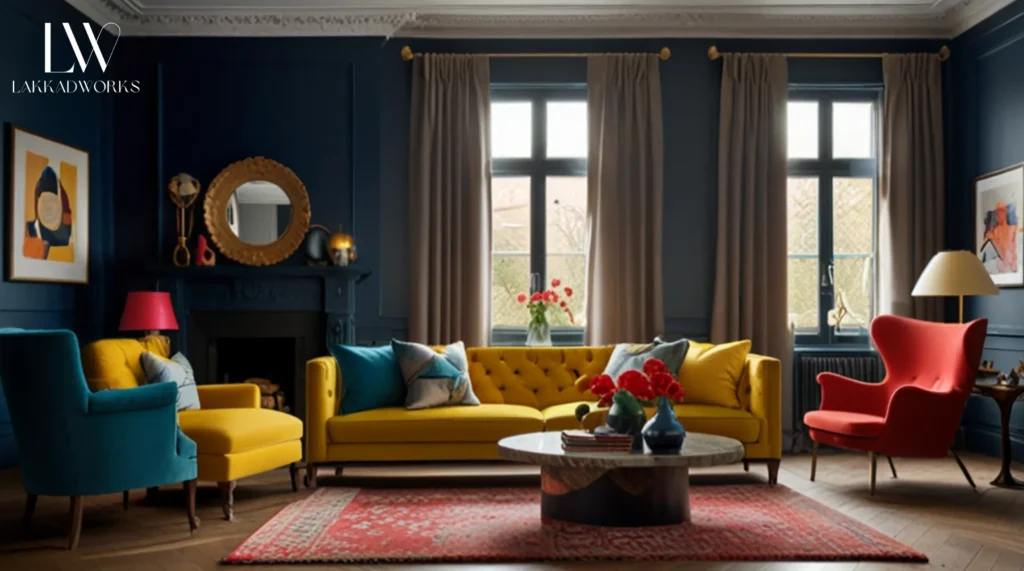
A balanced and creative interior design often combines bold colours with neutral tones for maximum impact. Vivid reds, vibrant yellows or rich blues add energy and character to a room, but overuse could overwhelm it completely.
Neutrals such as whites, greys and beiges help to balance these bold hues for a more balanced and harmonious appearance. When using bold colours in accessories, allow neutral tones to dominate.
By carefully balancing bold and neutral tones, you can achieve a dynamic and tranquil atmosphere creating visual interest without compromising comfort!
5. Blend the Texture with Colour
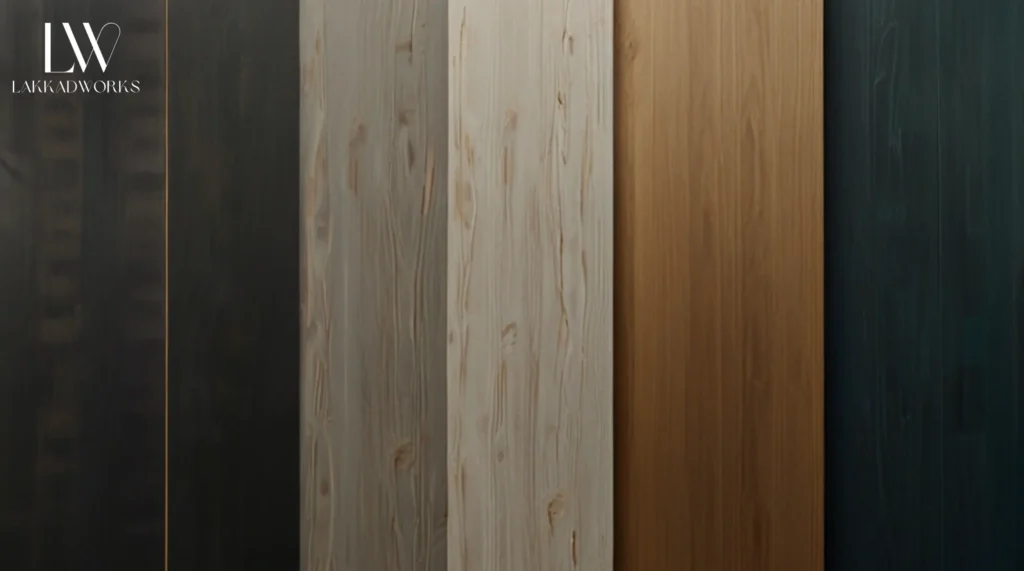
Texture is integral to know how colour is perceived, adding depth and dimension to your space. Smooth surfaces reflect light, making colours seem brighter, while matte or textured surfaces absorb light for more subdued effects.
Mixing textures such as velvet sofa, wool rug or wooden coffee table with your colour scheme and space design can create more visually engaging environments. When selecting textures in your design scheme, consider how they interact with each other to create the best atmosphere.
By strategically pairing texture and colour combinations, you can elevate your interior space’s design and make it visually appealing. Soft textures in warm hues may create an inviting, cosy environment, while sleek, calm-toned textures may exude more modern elegance.
You can elevate visually appealing interior colour decoration and spaces by carefully considering the texture combinations within each colour scheme.
6. Establishing Visual Flow Between Rooms
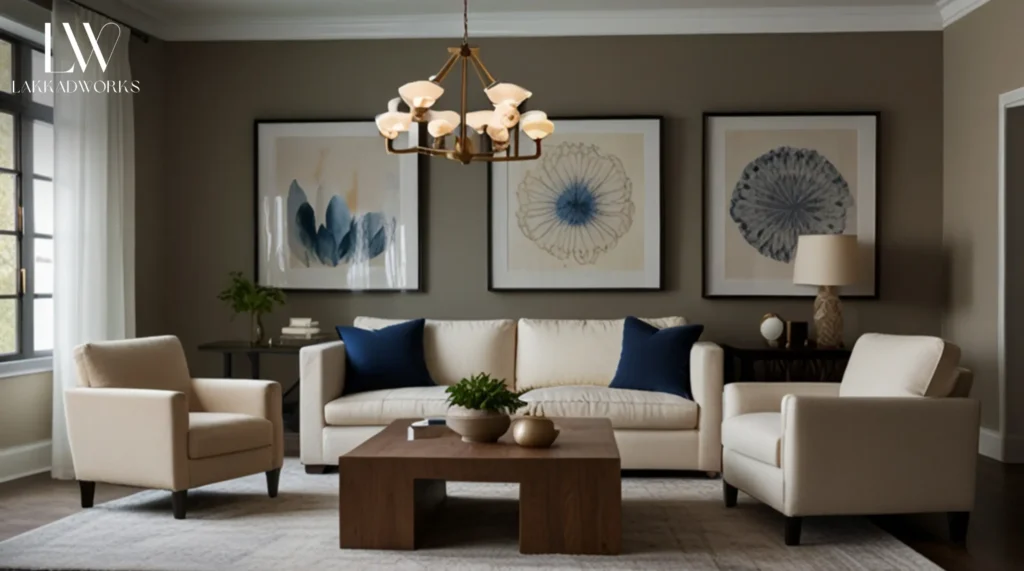
A harmonious look across different rooms is critical for creating a harmonious home environment. While each space may feature its colour palette, there should be a sense of visual continuity.
Use a harmonious colour palette or repeat specific hues across different rooms.
For instance, if your living room features shades of blue, incorporate similar tones into hallway and kitchen spaces even if their primary colours differ significantly. Colour coordination creates a subtle connection between rooms, making their transitions seamless and inviting.
A consistent colour strategy ensures your home feels like one integrated unit rather than an assemblage of unrelated rooms. Planning for a visual flow can make an inviting and harmonious living environment.
7. Customising Your Colour Scheme
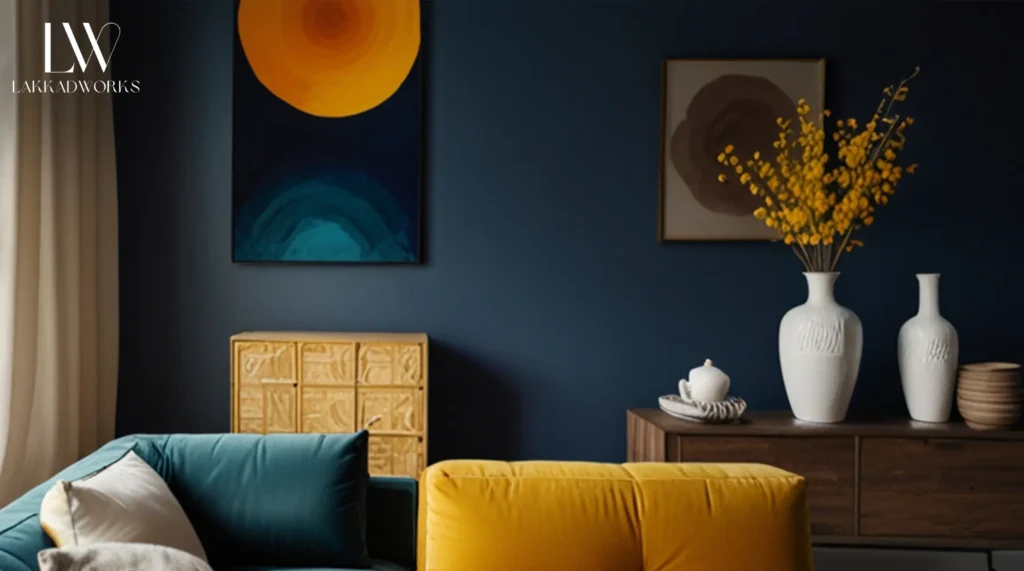
Although design principles offer guidance, your home should always reflect your tastes and styles. Don’t be intimidated to add hues that connect to your personality, even if they break traditional rules!
Are you drawn to bold or unconventional colours such as lime green or fuchsia? Even though these might not fit seamlessly into traditional interior design schemes, these bold choices can still be easily integrated into an eye-catching space if used as accent pieces that add personality without taking over completely.
Try using your favourite hues such as accent pieces so that they add interest without taking over. Consider how emotional associations of colours relate to your personal experiences and memories.
By customising your colour scheme to meet these specific needs, you’ll create a home that feels yours with colours that bring joy and comfort every day.
Optimise Your Space Layout for Flow and Functionality!
Optimise Your Space Layout for Flow and Functionality!
Connect with the Best Interior Designers and Find the Perfect Harmony of Colours!
Assembling a harmonious colour scheme in your home can look difficult but Lakkadworks makes it simple. Our talented team specialises in crafting interiors that reflect your style while promoting balance and beauty throughout each space.
Utilising our deep understanding of colour theory, lighting, texture, and tailoring projects specifically to our client’s individual needs, we produce functional and aesthetically pleasing results.
Choosing Lakkadworks means investing in an aesthetically pleasing home that feels like a relaxing sanctuary – contact us to transform it!


